Ulytau history

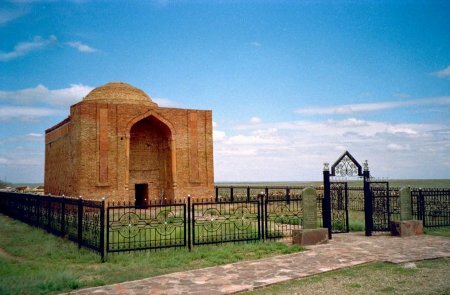
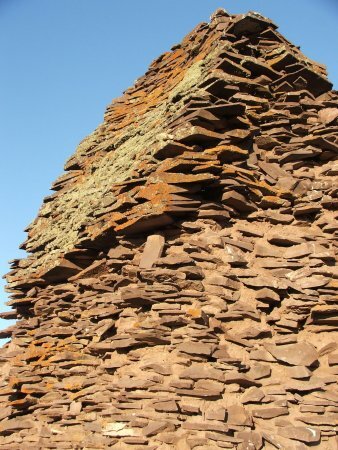

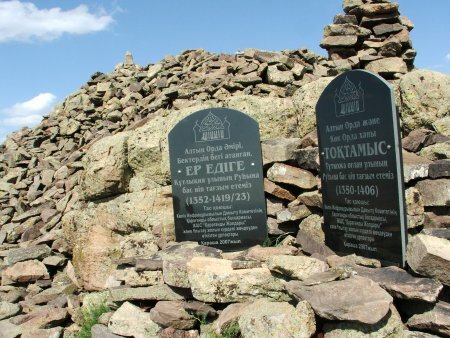
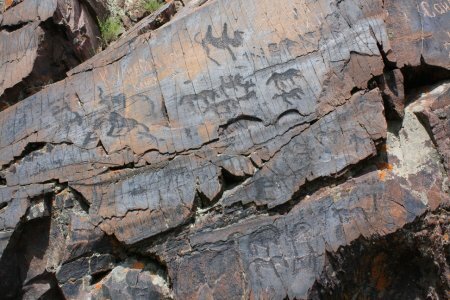
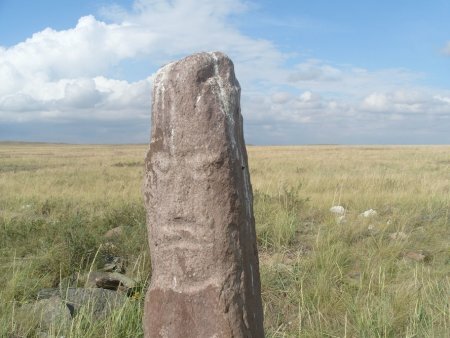 In the minds of every person, the concepts of why home, homeland, ancestral lands are associated with the center around which the rest of the world exists and to which the origins of the national culture, customs and traditions of the native people go back. The Ulytau mountains are such a home for the Kazakhs.
In the minds of every person, the concepts of why home, homeland, ancestral lands are associated with the center around which the rest of the world exists and to which the origins of the national culture, customs and traditions of the native people go back. The Ulytau mountains are such a home for the Kazakhs.Translated from the Kazakh language, these are the Great Mountains. But their greatness is not in scale, but in that historical significance, which is generated by the great events of national history associated with the formation of the Kazakh khanate and statehood. Ulytau can rightfully claim any of the epithets that scientists, journalists, local historians have generously endowed him with in recent years, who are increasingly studying this "historical center" truly "the cradle of the Kazakh people", one of the "epicenters of nomadic culture, steppe civilization."
Ulytau is the land of gray antiquity. Even a cursory list of monuments is striking in its antiquity and diversity. Many sites of the Paleolithic and Neolithic eras, with which these places are literally strewn, thousands of tools of labor of primitive people are found at every spring and on every lawn, as if presenting proof that these lands from ancient times attracted our ancestors with their fertility and beauty.
One of the largest in Kazakhstan workshop of the Paleolithic era, located near the Duzen mazar on the banks of the Karakengir River, impresses with its scale. The silent witness of the Stone Age, Zhetykonur was the subject of many years of research by archaeologists. Monuments of the Bronze Age - settlements, necropolises and majestic mausoleums of the Begazy-Dandybaev culture - were found in all river valleys. The royal burials of Aybas-darasy, Uytas-Aidos, Akoba, Taldysay attract the attention of numerous scientists and researchers of cultural monuments. For more than two and a half millennia, the mounds near the village of Kurgasyn and the Karaoba mound near the Terisakkan River have served as a guide for travelers.
An amazing sight of Ulytau is the so-called "mustache" mounds. Their riddle has not yet been solved. This is either one of the types of gravestone, or an ancient observatory, or a ritual complex, or maybe all of them taken together. The "mustaches" of such monuments, in the classical version, are always facing east, and some of them preserved in Ulytau surprise with a variety of orientations, shapes and numbers.
The mounds of the Huns era, rising in the plains of picturesque tracts, amaze with their majesty and beauty. In these places, you can also find traces of the cultures of the ancient Turks, Oguz-Kipchaks. The Turkic memorial enclosures with stone statues in the Arganaty and Kishitau mountains, in the Tleugabyl gorge, in the Korgantas tract are perfectly preserved. The length of the rows of some stone statues, also called balbals, reaches 250 meters.
The scale of the mining and metallurgical activity of the ancient inhabitants of Ulytau still amazes the scientific world. Numerous mines and quarries, metallurgical furnaces and billets testify that three thousand years ago, local tribes exported copper, tin, silver and gold to Iran, India, Greece and other countries. We find confirmation of this in the works of the "father of history" Herodotus. Metallurgical centers such as Elukudyk and Sorkudyk, Taldysay emerged in the Bronze Age, were used until the late Middle Ages. One of the sights of the original Ulytau culture are whole galleries of rock paintings by ancient artists. Scenes of everyday life and hunting, an amazing animal world, pictures reflecting the worldview of ancient people, were captured by the chisel of the first creators on the granite rocks of Terekty-aulie, Zyngyrtas, Arganaty along the banks of the rivers Baikonyr, Tamdy, Zhangabyl, Zhetykyz. In the Middle Ages, this land was called Desht-i-Kipchak (translated from Arabic - the country of the Kipchaks), the territory of which was divided between the large tribal associations of the Kipchaks, Kimaks, and the great Oguzes. Ulytau never belonged to one tribe or clan alone. This fertile land was a favorite place for khans of nomadic tribes, it was considered a sacred, reserved corner at all times.
It is no coincidence that the eldest son of Genghis Khan-Zhoshy Khan formed his headquarters here. From here began the conquest of Eastern Europe Batu. There are many architectural monuments in Ulytau associated with the house of the Chingizids. These are the mazars of Zhoshy Khan, Kutluk-Temir, Bolgan-ana, Kelin-tam, Talmas ata. In these steppes, the famous kyu "Aksak kulan" (XIII century) was born, informing Genghis Khan, according to legend, about the death of his son Zhoshy.
In the 14th century, a mazar was erected over the grave of Alashakhan, one of the founders of the Turkic tribes, who presumably lived in the 7th-8th centuries.
On one of the peaks of the Ulytau mountains rests the ashes of the great commander, politician and orator, Emir of the Golden Horde, Edyge, whose legendary name is mentioned in the heroic legends and epics of the peoples of Altai, the Urals, the North Caucasus, Crimea and Uzbekistan. The restless Khan of the Golden Horde Tokhtamysh also wished to stay in the Ulytau mountains forever. According to academician Alkei Margulan, an expert on the history of Ulytau, the powerful king of Turan Afrasiab also spent the last days of his life in Ulytau in his copper palace.
On the Altynshoky mountain, on a stone slab, the almighty Tamerlane left the memory of his stay in Ulytau. Bizarre granite rocks of Ulytau remember both the Bukhara khan Abdallah and the Kokand warriors of Khudoyar khan. Ulytau's spring water was drunk by many medieval European and Russian ambassadors who were heading for the main headquarters of the Mongols, Karakorum. Biographies of such historical figures as Ketbuga, Kerey, Zhanibek, Kasym, Tauke, Barak, Kuchum, Abylai, Abulkhair, Akzhol bi, Kazbek bi, Kenesary and many others are associated with the name of Ulytau.
Ulytau is the geographical center of Kazakhstan. On the map, you will find that it is located at an equal distance from both north to south and east to west of Kazakhstan. Apparently, this explains the fact that it was a strategically convenient base for gathering troops and dispersing them on pastures with numerous springs around the Ulytau mountains.
During the years of "national disaster" ("ak-taban shұbyryndy") Ulytau became famous for the fact that in its southeastern part, the united forces of Kazakh clans for the first time repulsed the Dzungars. Since then, this tract is called Kalmakkyrgan, which means “the place where the Dzungars were defeated”. The recalcitrant great Ulytau mountains remained a hotbed of resistance and independence during the years of the tsarist colonial policy. Evidence of this is the uprising of Kenesary Kasymov in the middle of the 19th century, Amangeldy Imanov in 1916-1917.
The convenient geographical position of Ulytau is also evidenced by the fact that one of the main branches of the Great Silk Road in Saryark passed through Ulytau from Central Asia to Siberia - the so-called "Sarysu" or "copper" road. Dozens of caravanserais, fortified settlements, feudal castles, guard towers located along the caravan routes serve as confirmation. Urban culture, handicrafts and trade developed intensively there, as evidenced by the results of archaeological research at the settlements of Baskamyr, Zhoshy-Orda, Ayakkamyr, Orda-bazaar. Scientists suggest that this trade route originated long before the Great Silk Road and existed until the thirties of our century, which undoubtedly influenced the development of the culture of this region.
Nature was not stingy, endowing this land with countless treasures, which Ferdowsi wrote about in his epic poem "Shahnameh". The unique landscapes of Ulytau are described in his travel notes by the 11th century Arab traveler al-Idrisi. There is a mention of Ulytau in the Kazakh folk tale "Er-Tostik". As you know, the "philosopher of the Steppe" Asan-Kaigy traveled around many corners of Saryarka in order to find the best lands for his people, but fixed his eyes on Ulytau.
Academician Kanysh Satpayev called the Ulytau steppes the pearl of Kazakhstan, because almost all elements of the periodic table were found in the bowels of the Ulytau region. It is noteworthy that the epoch-making event of the century - manned space flight - is also associated with Ulytau, with the Baikonur cosmodrome. Ulytau, although it resembles with its relief and aspen-birch pegs the resort places of Kokshetau, Bayanaul, Karkaraly, but first of all it is the historical center of Kazakhstan, and it is no coincidence that during the days of the World Kuryltai of Kazakhs the forum participants first of all wished to visit this national shrine of the Kazakh people. In those days, the First President of Kazakhstan N.A. Nazarbayev took part in the establishment of a memorial sign to commemorate the historical role of Ulytau in the formation of Kazakh statehood.
Ulytau is truly a geographic phenomenon. As if an island surrounded by steppe and desert, it grants travelers with spring coolness and shade of aspens and birches. No wonder it is called "the land of lakes". Every spring, lakes Barakkol, Koskol, Ashikol, Kurkol collect birds from India, Africa, the Mediterranean, and Western Asia. There are two main migration routes of the steppe saiga antelopes.
In order to preserve unique historical and archaeological monuments and rare natural components, the Ulytau National Historical, Cultural and Natural Reserve-Museum was established here in 1990.
Today, this land, which has absorbed the spirit of the nomads of three millennia, covered with legends, sung by poets, bewitching people for many centuries, it is still shrouded in a veil of secrets.
Discuss
Similar materials:
Comments (0)











